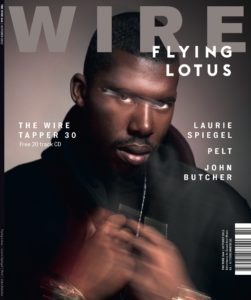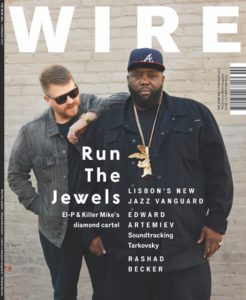
Founded in 1982, the Wire magazine is one of the oldest print magazines for new and avant music in the world. That probably means little to most American hip-hop listeners, except that the British publication has frequently if fitfully championed interesting rap artists, from usual suspects like Madlib to pleasant surprises like Timbaland (who received a lengthy feature in the December 1998 issue). At its best, the magazine explores a wider range of hip-hop than any other publication, even when taking forward-thinking music sites like Pitchfork and the Quietus into account. (Full disclosure: I’m a frequent contributor, and I wrote a June 2001 cover story on Definitive Jux.)
In the United States, the closest comparisons to the Wire are URB, which ended in 2009; and XLR8R, which ceased printing in 2011 but maintains an active internet presence. Both were focused on dance/electronic/club music. In regards to rap covers, the former leaned towards popular college/alternative hip-hop acts as well as a few mainstream stars, including Kanye West, the Roots, Missy Elliott and Aesop Rock. XLR8R’s covers were more aesthetically haphazard, ranging from Dabrye and KRS-One to Bun B, Little Brother, and E-40.
The Wire initially defined itself as a jazz magazine, then clumsily but definitively embraced popular music with a June 1991 Michael Jackson cover. As longtime publisher Tony Herrington explained to The Guardian, the months that followed were “a weird period.” The December 1991/January 1992 issue brought a special on Black music, with a feature on the technological aspects of the Bomb Squad and Lench Mob. Subsequent years brought an arms-length embrace of hip-hop, with writers acknowledging its innovations while shifting uneasily at its sometimes unsavory themes. A prime example: a 1992 feature on the rise of weed rappers like Cypress Hill was given the headline “Drug of the Nation.” Meanwhile, Arrested Development’s 3 Years, 5 Months and 2 Days in the Life Of… was named the top album of that year.
The Wire eventually found its footing with left-of-center acts like New Kingdom, Prince Paul, and Rammellzee. September 1999 brought Gang Starr, its first rap cover. Still, a search through the magazine’s archives revealed a mere 16 covers out of hundreds. That’s omitting Black experimental artists like Tricky and Dean Blunt — hey, not every Black person who makes music is a rapper — while making room for the likes of Flying Lotus, an electronic musician who has also made rap tracks as Captain Murphy. It doesn’t seem like much. As of this writing, there hasn’t been a rap cover since December 2019 and Los Angeles trio Clipping. But given the Wire’s far-flung appreciation for cutting-edge jazz, rock, noise, metal, electronic and modern classical variants, the neglect doesn’t feel malicious.
In the past, the Wire has pulled off some editorial coups, including early articles on Anticon (October 2000) and Odd Future (May 2011). Its February 2012 Lil B cover may be the only time the inscrutable cult act has appeared as the lead on a globally distributed magazine.

















Originally published on criticalminded.com.
Humthrush.com will always be free to read and enjoy. If you like my work, leave a tip at Ko-fi.com/humthrush.


